Welcome
Treating Noise
Elegantly
Acoustica is a premium acoustic panel brand, certified by world-class accredited labs in the USA.
Proudly manufactured in Dubai, UAE, our panels are crafted using the finest raw materials and the most advanced production technology. With fully automated precision, we produce panels of unlimited length, limited only by industry-standard board sizes.
Our commitment to quality, innovation, and cutting-edge manufacturing ensures superior acoustic performance, setting new standards in the industry.
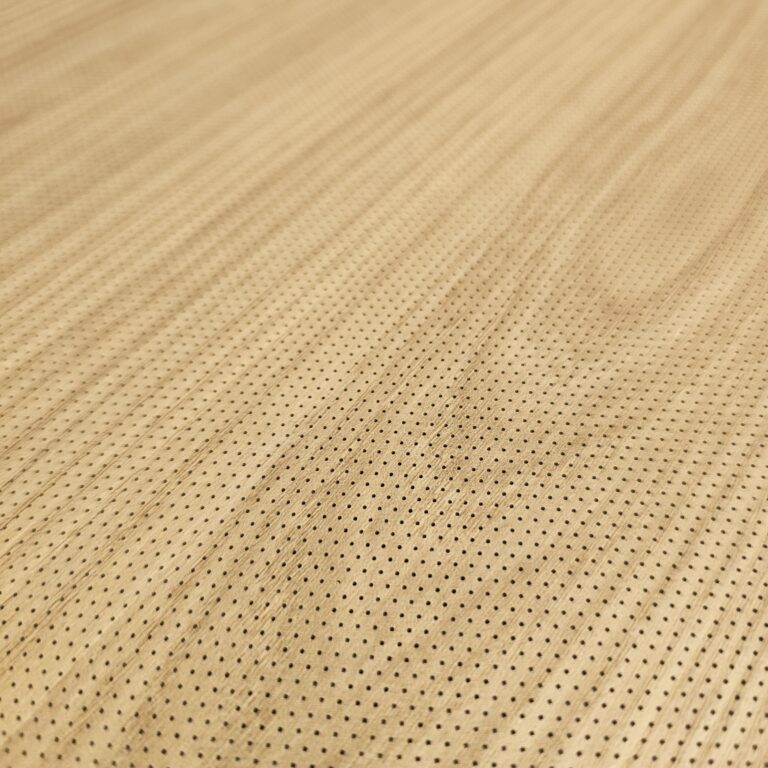
Acoustic panels should rarely be purchased in standard sizes. The ideal approach is to have panels cut to their final installation dimensions, factoring in the preferred mounting method during manufacturing. Cut-to-size panels ensure profiled and finished edges for seamless alignment, allowing for quick and effortless installation. Once the first board is in place, the rest follow with precision and stability.
Acoustica eliminates the challenges of standard sizing and long lead times by manufacturing in Dubai, UAE. Serving the GCC region, we provide custom-sized panels with short lead times and the flexibility to modify dimensions on short notice, ensuring efficiency and adaptability for every project.
Reverberation
Understanding
Reverberation
Understanding Reverberation and Its Impact on Acoustics.
Reverberation is the persistence of sound in a space after the original sound source has stopped. This occurs because sound waves reflect off surfaces like walls, ceilings, and floors before eventually dissipating. The Reverberation Time (RT) is the duration it takes for a sound to fade by 60dB, and it plays a crucial role in the acoustics of a room.
The RT of a space is determined by:
The size and volume of the room.
The materials and finishes present (hard surfaces reflect sound, while soft surfaces absorb it).
The intended use of the space (e.g., a concert hall benefits from some reverberation, whereas a classroom requires minimal echo for speech clarity).
A long RT can make speech and music sound unclear, causing echoes and reducing overall sound quality. This is particularly problematic in places where clarity is essential, such as auditoriums, lecture halls, and meeting rooms.
How Acoustic Panels Help in RT Control:
The most effective and widely used solution for reverberation control is acoustic panels. These panels absorb sound energy, preventing excessive reflection and reducing RT. The efficiency of an acoustic panel is measured by its Noise Reduction Coefficient (NRC), which indicates how much sound it absorbs.
NRC = 1 → 100% absorption (ideal for reducing reverberation).
NRC = 0 → 0% absorption (total sound reflection).
Key factors in choosing acoustic panels:
Material & NRC Value – High-NRC panels absorb more sound.
Design Aesthetic – Panels come in various finishes and colors to complement interior designs.
Room Purpose – The optimal RT varies depending on whether the space is for speech, music, or general use.
The Importance of Acoustic Treatment
In spaces designed for communication and performance, sound clarity is critical. Poor acoustics can ruin the experience by making speech incomprehensible and music distorted.
Acoustic panels are essential in:
Auditoriums & Theatres – Enhancing music and voice clarity.
Classrooms & Universities – Ensuring clear speech for learning.
Halls & Event Venues – Reducing echoes for better sound distribution.
Public Facilities & Offices – Improving speech privacy and reducing noise distractions.
Acoustic treatment is not just about reducing noise—it is about optimizing the way sound behaves in a space to enhance comfort, clarity, and functionality. Properly designed acoustics elevate architectural spaces, ensuring they are both visually and acoustically refined.
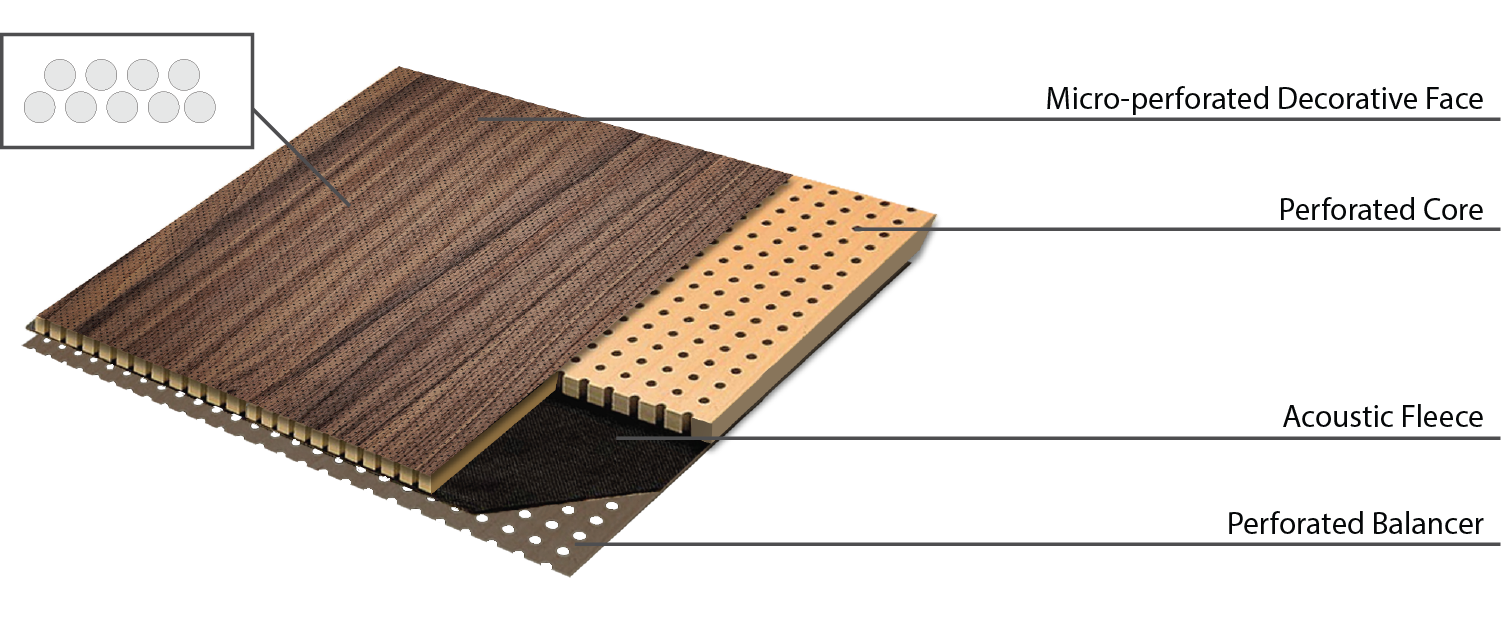
Micro | Nano Perf
0.5mm
Classico
1.00mm

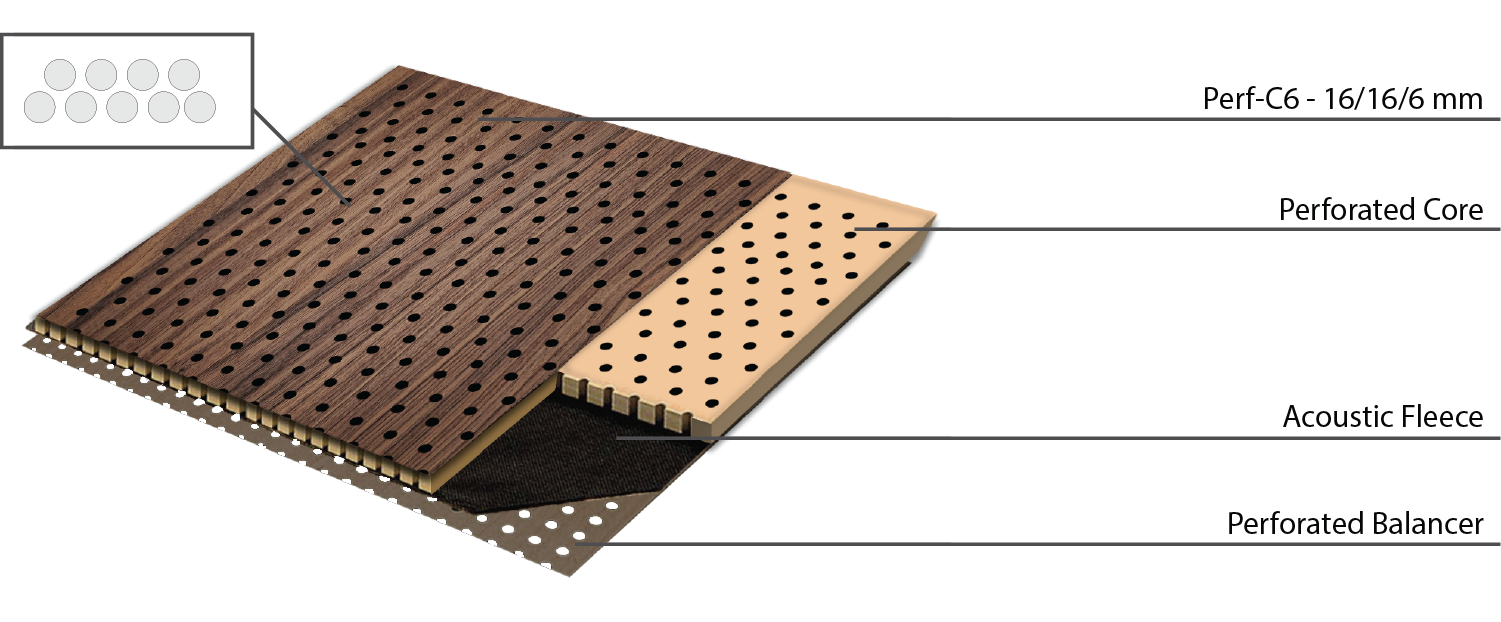
*Perf-C6
SLT
16/3 | 32/3 | Mix
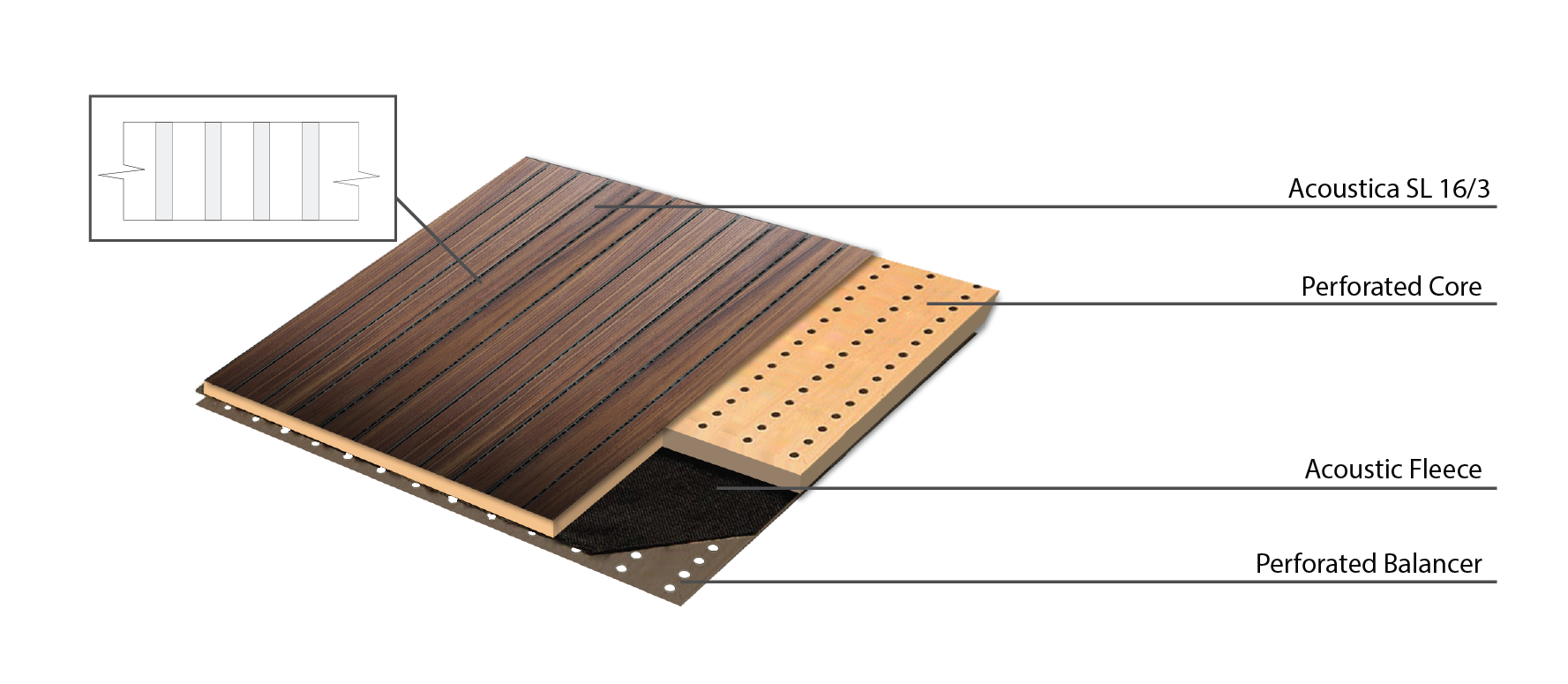
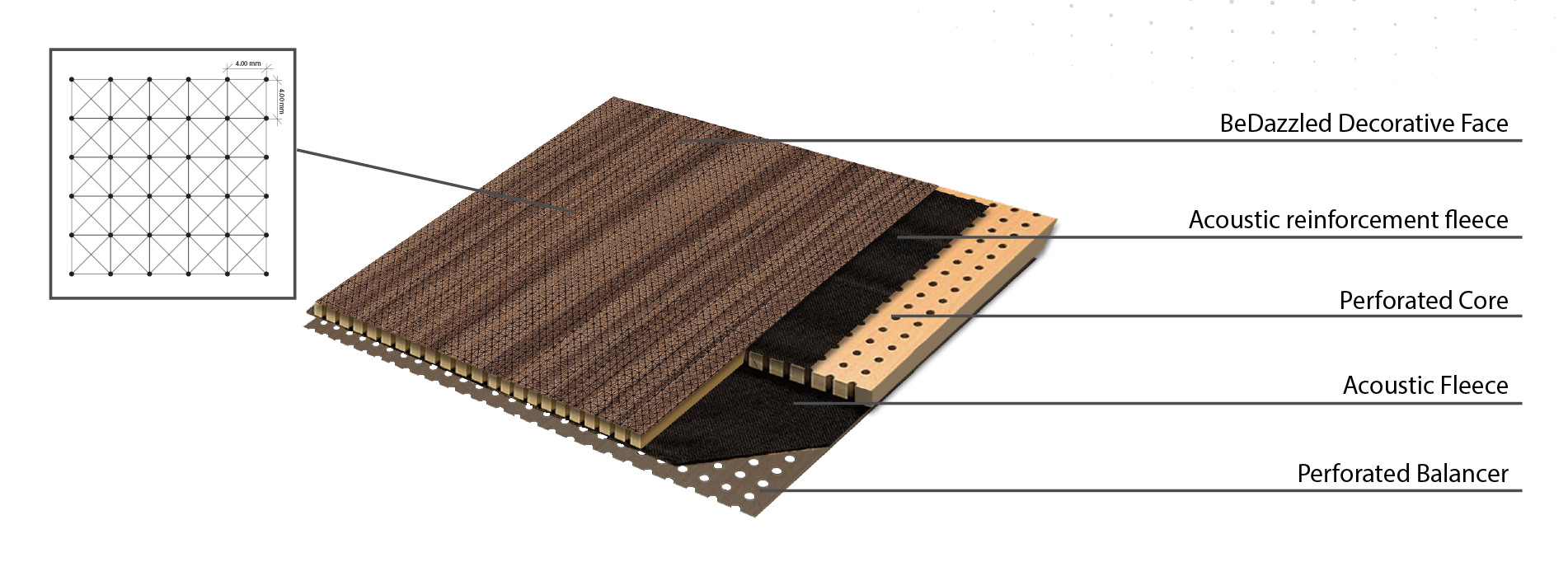
BeDazzled
Geometrically Styled
Geometrically Micro Grooved & Perforated.
our Collections
The vital role of acoustics in
Auditoriums, theatres, multi-function halls
An auditorium without proper reverberation control is essentially a wasted space. When sound waves continuously bounce off the ceiling, walls, and floor, it becomes nearly impossible to clearly hear and understand speech.
As spaces dedicated to speech, music, and theatrical performances, the sound quality in auditoriums and theatres is of utmost importance.
Successful interior architecture and design in these spaces, where clarity and quality of sound are crucial, must go hand in hand with effective reverberation control.
The key to achieving this is acoustic treatment, particularly through the use of acoustic panels.
Interior
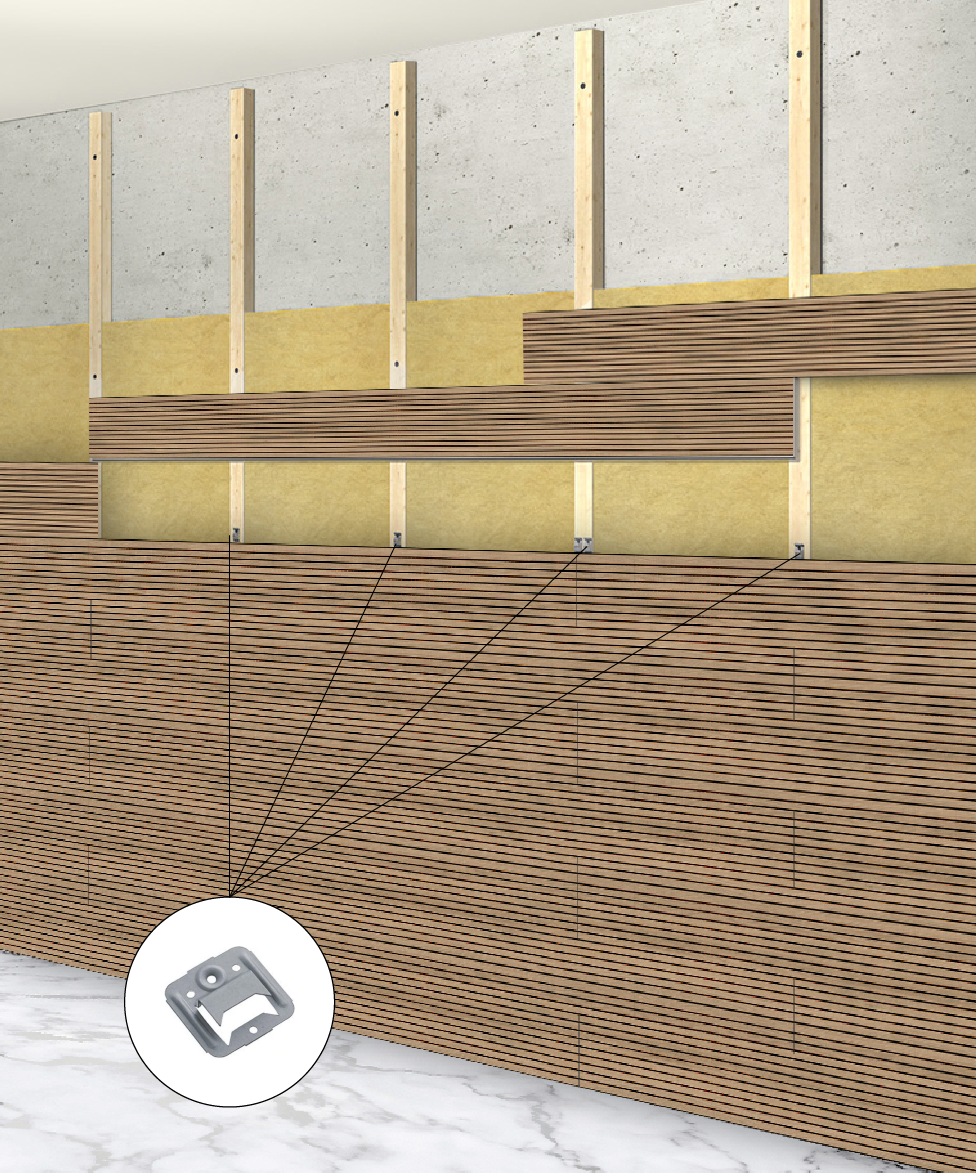
Horizontal installation
Enovation is often the ability to reach into the past and bring back what is good
All Over The World In Architect
A wonderful serenity has taken possession of my entire soul, like these sweet mornings of spring which I enjoy with my whole heart.A wonderful serenity has taken possession of my entire soul, like these sweet mornings of spring which I enjoy with my whole heart.vA wonderful serenity has taken possession of my entire soul, like these sweet mornings of spring which I enjoy with my whole heart.A wonderful serenity has taken possession of my entire soul, like these sweet mornings of spring which I enjoy with my whole heart.v
All Over The World In Architect
A wonderful serenity has taken possession of my entire soul, like these sweet mornings of spring which I enjoy with my whole heart.A wonderful serenity has taken possession of my entire soul, like these sweet mornings of spring which I enjoy with my whole heart.vA wonderful serenity has taken possession of my entire soul, like these sweet mornings of spring which I enjoy with my whole heart.A wonderful serenity has taken possession of my entire soul, like these sweet mornings of spring which I enjoy with my whole heart.v

Vertical installation
nnovation is often the ability to reach into the past and bring back what is good
Factors affecting acoustics:
Factors Affecting
Acoustics:
Area Dimensions/Volume
The dimensions of a room significantly impact sound quality. Larger spaces are generally better suited for music, while smaller rooms tend to provide clearer sound for audiences. However, larger spaces also contribute to longer reverberation times, making speech harder to understand.
To address this issue, reverberation control through the use of sound-absorbing acoustic panels is essential in larger spaces to maintain clarity.
Area Shape
The shape of a room plays a key role in how sound behaves. Irregularly shaped rooms help diffuse sound waves, whereas flat surfaces reflect sound, increasing reverberation time and affecting sound quality. Most auditoriums and theatres are typically rectangular or fan-shaped, which makes reverberation control even more important.
In these spaces, sound-absorbing acoustic panels and high-STC-rated doors are critical in reducing noise that might enter from external corridors, pathways, or other halls.
Materials Used
Reverberation occurs when sound waves bounce off hard, non-porous surfaces. Materials like glass, marble, stone, granite, ceramic, and dry walls are highly reflective, worsening the acoustic environment. For example, glass has an NRC of 0.00, meaning it reflects sound rather than absorbing it.
Similarly, surfaces like dry walls and decorative panels often have a low absorption coefficient (around 0.15), reflecting sound waves and contributing to longer reverberation times. Using porous materials and sound-absorbing panels is key to improving acoustic performance.
Targeted Use or Purpose
The purpose of the space must be considered when determining the appropriate reverberation time. Multi-function halls and auditoriums in schools or universities are used for a range of activities, from sports events to music concerts to lectures. The reverberation time required for musical events differs from that needed for speeches.
For instance, reverberation time for rock music needs to be longer than for classical music or speech-based events. Acoustic panels should be selected based on the type of activities that will take place in the space.
Doors and Other Openings
Noise can easily travel through doors, windows, and other openings, affecting the acoustic quality of the space. To control sound leakage, doors with a high STC rating are essential. Preventing sound bleed-in from external areas helps maintain speech clarity and overall sound quality in the room.
White Noise
Background noise, such as from HVAC systems, can impact the acoustic environment, even if it doesn’t seem bothersome at first. Long-term exposure to white noise can reduce productivity and performance. While modern systems use mufflers and duct liners to reduce noise, older systems can still produce disturbing sounds.
In open-plan offices, constant background noise from conversations, phone calls, and printers can negatively affect employees' performance over time. To mitigate this, sound-absorbing acoustic panels and desk partitions should be used to maintain a quiet, productive work environment.
Acoustic Treatment Solutions
Various sound-absorbing products are available to improve acoustics, such as:
Ceiling Clouds and Baffles
Stretch Fabric Acoustic Panels
Wooden Decorative Acoustic Panels
These products help to address reverberation, reduce white noise, and enhance overall acoustic quality, making them essential in spaces that require superior sound performance.
Acoustic treatment:
Acoustic:
Treatment
Acoustic Treatment
Understanding the problem is the first step toward finding a solution. The three main concepts in treating noise are Absorption, Diffusion, and Soundproofing.
Absorption: Acoustic panels are highly effective in absorbing sound wave energy and dissipating reverberation, improving the clarity and quality of sound in a space.
Diffusion: To effectively treat reverberation, sound diffusion is essential. Using sound diffusers and placing sound-absorbing panels in corners helps disperse sound waves evenly throughout the room, preventing echo and improving overall acoustics.
Soundproofing: Blocking sound waves from traveling through doors and windows is crucial to prevent noise from bleeding into treated spaces. Proper soundproofing ensures that external noise doesn’t interfere with the acoustics within a room, maintaining the integrity of the acoustic treatment.
Together, these methods provide a comprehensive approach to managing sound and improving acoustic performance in any environment.


Common Spaces That Need Noise Treatment
and the Use of Acoustic Panels:
Acoustic treatment is essential in various spaces where noise control, clarity of speech, and sound quality are critical. Here are some common spaces that benefit from the use of acoustic panels:
Auditoriums
Designed for performances, lectures, and speeches, auditoriums require excellent acoustics to ensure sound clarity and avoid excessive reverberation.
Theatres
Acoustic panels enhance sound quality in theatres, ensuring that voices and music are heard clearly by the audience, while also controlling unwanted echoes.
Classrooms
Reverberation can make it difficult for students to hear the instructor. Acoustic panels help maintain speech clarity, improving learning environments.
Multi-purpose Halls
These spaces are used for various events, from sports to lectures to performances. Acoustic treatment ensures the space is adaptable to different sound needs.
Ballrooms
In spaces where events like weddings, banquets, or conferences are held, acoustic panels help reduce reverberation, ensuring speech and music are clear for guests.
Airports
Airports often experience high noise levels. Acoustic treatment helps reduce ambient noise, creating a more comfortable environment for passengers.
Conference Rooms
For effective communication, especially in virtual meetings, acoustic panels reduce background noise and reverberation, improving speech intelligibility.
Worship Buildings
Places of worship require clear sound for prayers. Acoustic panels help maintain reverberation control, enhancing audio quality.
Sports Courts
Noise in sports arenas or gyms can interfere with communication and gameplay. Acoustic panels help maintain focus by controlling sound reflections.
Court Houses
In legal settings, clear communication is essential. Acoustic panels help reduce ambient noise, ensuring that every word is heard with clarity.
Restaurants
Dining spaces with excessive noise can create a poor experience for guests. Acoustic panels absorb sound, making the atmosphere more comfortable and pleasant.
Tower and Building Lobbies
High-traffic areas like lobbies often suffer from echoes. Acoustic treatment ensures noise levels are kept in check, promoting a welcoming environment.
Public Facilities
Hospitals, libraries, and other public spaces require noise control to ensure a calm and efficient atmosphere for visitors and staff.
Building Corridors
Hallways and corridors can amplify sound. Acoustic panels help control noise transmission and improve sound quality in adjacent rooms.
Open Offices
Open-plan offices are susceptible to background noise. Acoustic panels and partitions help reduce distractions, improving productivity and speech clarity.
Offices Where the Sanctity of Speech or Conversation Must Be Maintained
Offices that require confidentiality, such as legal, financial, or healthcare settings, benefit from acoustic panels that reduce eavesdropping and maintain privacy.
Acoustic panels play a crucial role in these spaces, improving both sound quality and overall comfort.

